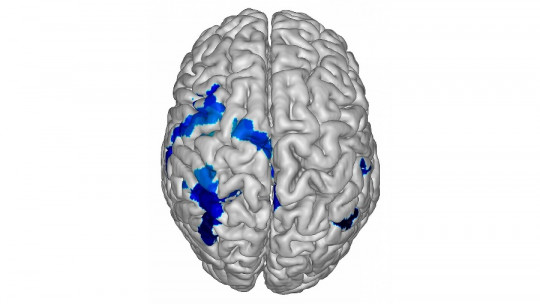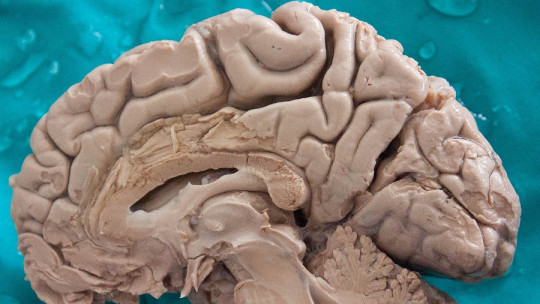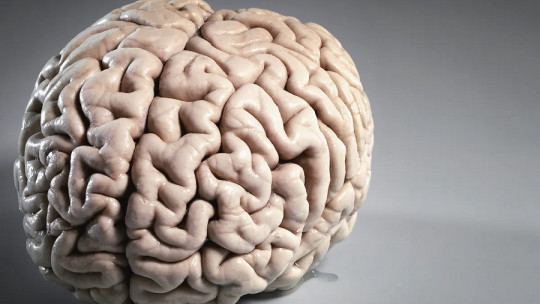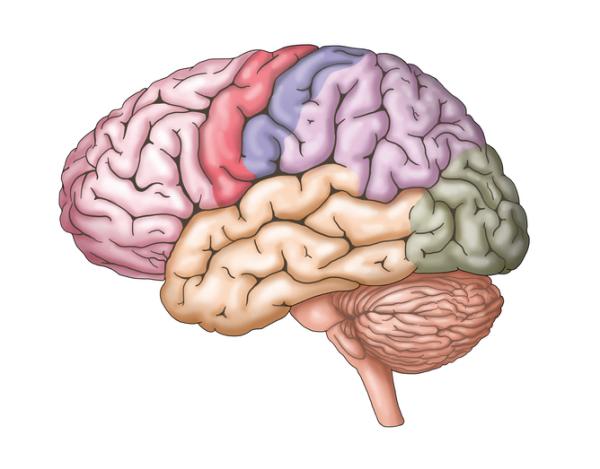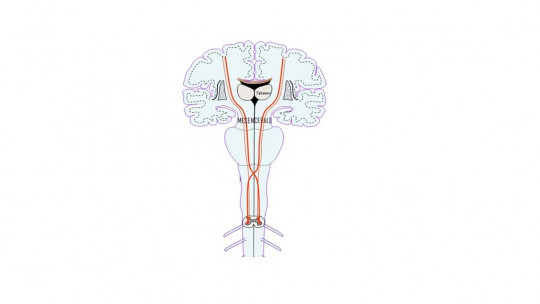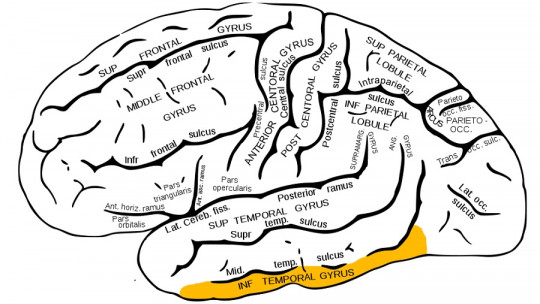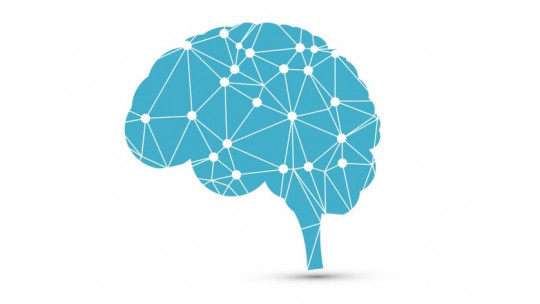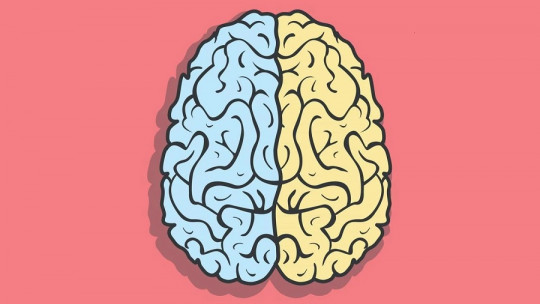
The brain has two hemispheres which have functions in which they specialize. It is said that the left hemisphere is in charge of the verbal and analytical, while the right hemisphere would be more involved in the artistic.
Although there are many myths regarding the abilities of each of the hemispheres, it is a clinical reality that presenting lesions in one or the other brings with it different symptoms.
What happens when the left hemisphere of the brain is injured? Let’s find out the answer below.
The effects of lesions on the left cerebral hemisphere
As you probably already know, When observing a brain we can differentiate between two sides called hemispheres, one located on the left side and the other on the right side. They are separated by the longitudinal fissure, united by the corpus callosum and, in appearance, are very similar. Both have a superficial cerebral cortex, white matter, and basal nuclei. In turn, they are divided into four lobes: frontal, parietal, temporal and occipital.
But despite having a very similar appearance and structure, the truth is that they differ quite a bit in terms of their functions, so much so that an injury to one side or the other of the brain implies very different symptoms. In fact, in the clinical practice of neuropsychologists, it is common to speak in terms such as “this patient is very left-brained” or “he presents problems specific to the right hemisphere.”
Some complex cognitive functions are unevenly distributed in the brain and, in some cases, they can only be located in one of the two hemispheres. If such a situation occurs, we say that such hemisphere is dominant for such function, the case being the left hemisphere for language, being more verbal and analytical, while the right hemisphere is more oriented towards spatial perception and artistic aspects, such as music.
Although the idea that one side of the brain is more rational and the other is more imaginative has been considered a controversial idea, there is no doubt because it is supported by clinical practice that lesions in one or the other hemisphere brings with it various problems. In fact, Not only the laterality of the lesion implies one type or another of symptoms, but also in which lobe it occurred An injury to the left parietal lobe brings with it different problems than an injury to the left temporal lobe.
In general, it is considered that the areas of the association cortices of the frontal, parietal and temporal lobes of the left hemisphere are responsible for the functions associated with the comprehension and expression of language, which is why it is assumed that the left hemisphere is dominant for verbal aspects.
An interesting aspect to comment on is that the brain preponderance of each individual is established during the first years of life. It is common that when we are still very young the language functions are located in both hemispheres to a greater or lesser extent but that, after a few years, the left hemisphere is the one that ends up specializing in linguistic aspects
However, it can always be the case that while we are still very young we suffer a brain injury. As the brain at an early age is a highly plastic organ, the fact that there is an injury to the left hemisphere does not mean that the ability to speak will be lost. In fact, as the right hemisphere houses certain linguistic functions while still young, it always and when it is healthy, it can compensate for the problems of the other hemisphere, making verbal dominance in this case on the right side.
Unfortunately, although human beings enjoy the gift of brain plasticity, it does not last forever. As we develop, our brain loses this capacity, which means that the older we are, the less likely we are to recover from a brain injury. In adulthood, if you suffer an injury to the left hemisphere, problems related to language will manifest, both written and oral

Problems associated with lesions in the lobes of the left hemisphere
The left hemisphere is not homogeneous, presenting several lobes, each of which performs some functions that are specific to it. This means that receiving an injury to the left hemisphere does not always bring with it the same symptoms, since It is not the same that it occurs in the occipital lobe than in the temporal lobe, to give an example Next we are going to see the problems associated with injuries to the lobes of the left hemisphere.
1. Frontal lobe
The frontal lobe is involved in aspects of motor control and programming, this being the place where we can find Broca’s area, involved in the production of language The left frontal controls the expressive function of language and is also responsible for other much higher cognitive functions such as short-, medium- and long-term behavior planning.
Lesions in this lobe can lead to several problems, including simple motor seizures, facial hypotonia, and contralateral hemiplegia. In addition, there may be alterations in social functioning and, if the lesion is in Broca’s area, motor aphasia may occur, characterized by problems in the expression of verbal fluency, without language comprehension having necessarily been compromised.
Other problems caused by damage to the left frontal lobe include problems with reading and writing, in the form of alexia (inability to read) and agraphia (inability to write).
2. Parietal lobe
The left parietal lobe fulfills functions related to the integration and processing of multimodal sensory information This brain area is involved in the conscious notion of body schema, orientation, posture and spatial skills.
When an injury occurs to this lobe it can lead to various problems related to sensation, such as sensory crises. There may be a significant alteration or reduction in sensitivity on the contralateral side of the body, that is, the patient notices that they do not feel their right arm or leg very well. In addition to this, problems such as distortion of the body schema may occur:
Lesions in the left parietal lobe often involve loss of lower visual field Added to this, patients with left parietal damage show serious difficulties in naming objects (anomia), inability to carry out mathematical operations (acalculia), alexia and agraphia.
3. Temporal lobe
The left temporal lobe houses auditory functions, mainly related to language comprehension Wernicke’s area is located in this brain region, which specializes precisely in understanding language.
The left temporalis is also involved in emotional aspects of behavior and in the conscious appreciation of the sense of smell
It has been seen that patients who suffer a unilateral lesion (only in one hemisphere) in the left temporal lobe manifest problems such as:
- Paroxysmal attacks of impassibility.
- Automations: behaviors without purpose.
- Olfactory, auditory and visual complex hallucinations.
- Mood disorders.
- Déjà vu: feeling of having previously lived an experience.
Since Wernicke’s area is in this lobe, if an injury occurs right in it can result in comprehension aphasia, in which the patient may report having fluent language, but it lacks meaning as he does not understand very well what is being said to him. The patient will show serious problems in language comprehension, but not necessarily in production, as long as Broca’s area has not also been involved in the frontal lobe.
- Related article: “Temporal lobe: structure and functions”
4. Occipital lobe
Finally we will talk about the left occipital lobe, which is responsible for visual perception and interpretation. That is why, in the event of an injury in this region, pThe patient may suffer paroxysmal visual hallucinations in the form of lights or colors that are not really there (simple partial seizures).
You can also give the contralateral visual field loss causing the patient to have the sensation of having gone blind in his right eye and only seeing the left half of his visual field (contralateral homonymous hemianopia)
As we have seen, each lobe of the left hemisphere brings with it certain problems. However, given that it is rare for patients to suffer from brain lesions located in a single lobe or even in a single hemisphere, the symptoms associated with the lesions can be much greater, combined and aggravated in the specific case.
- You may be interested: “Occipital lobe: anatomy, characteristics and functions”

